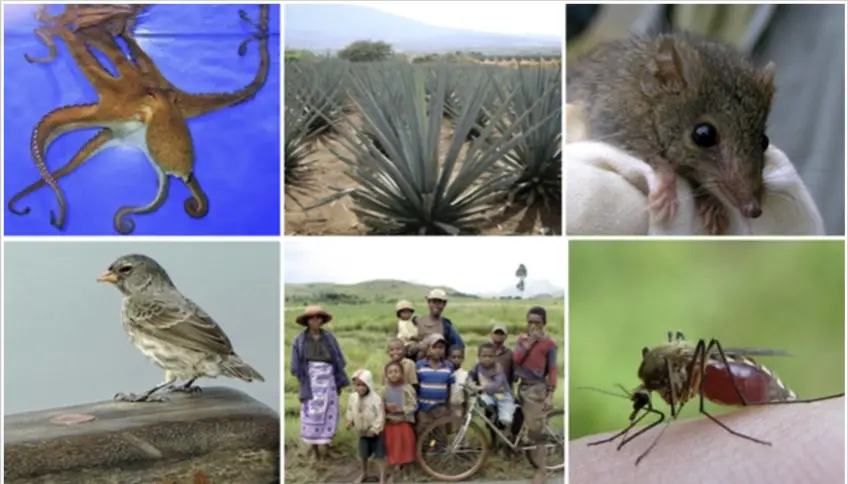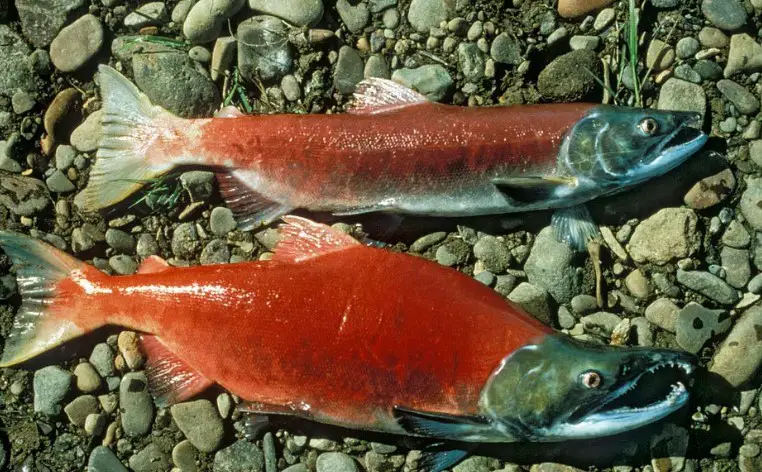The strategies organisms use to reproduce can profoundly impact their survival, adaptation, and evolution. Two primary reproductive strategies observed across the animal and plant kingdoms are semelparity and iteroparity. These strategies represent different approaches to the allocation of energy and resources towards the production of offspring, with each having its unique set of advantages and trade-offs.
Semelparity and iteroparity are distinguished by the frequency with which an organism reproduces over its lifetime. Semelparity refers to species that reproduce only once before dying, putting all their energy into a single, often massive reproductive event. In contrast, iteroparity describes species that reproduce multiple times throughout their lives, spreading their reproductive efforts over several events.
Understanding these strategies offers insights into how species adapt to their environments, manage risks, and contribute to the biodiversity of ecosystems. The choice between semelparity and iteroparity is influenced by a myriad of factors, including lifespan, predation pressure, and environmental variability. This diversity in reproductive strategies underscores the complexity of life and the myriad ways organisms have evolved to ensure their genetic legacy.

Basic Concepts
Reproductive Strategies
Definition and Significance
In the realm of biology, reproductive strategies are the methods by which organisms pass on their genetic material to the next generation. These strategies are vital because they influence survival rates, population dynamics, and evolutionary pathways. Essentially, the way an organism reproduces can significantly impact its ability to adapt to and thrive in its environment.
Semelparity
Overview
Semelparity is a strategy where an organism reproduces once in its lifetime and then dies. This one-shot approach to reproduction is characterized by the organism investing all its resources into a single reproductive event. Semelparity is often seen in environments where the conditions for survival are highly variable or unpredictable.
Iteroparity
Overview
Iteroparity, on the other hand, involves organisms reproducing multiple times over their lifespans. This strategy allows for the distribution of reproductive efforts across several events, potentially enhancing the chances of offspring survival and genetic dissemination. Iteroparity is common in more stable environments, where survival rates are higher and resources are more consistently available.
Semelparity Explained
Key Characteristics
Single Reproductive Event
In semelparity, the entire lifetime of an organism culminates in a single, often grand reproductive effort. This event is the pinnacle of the organism’s life, after which it typically dies.
Energy Allocation
The energy allocation in semelparous species is all-or-nothing. All available resources are directed towards maximizing the success of this solitary reproductive event, often at the cost of the organism’s own survival post-reproduction.
Advantages
Risk Management
Semelparity can be an effective risk management strategy in unpredictable environments. By concentrating all reproductive efforts into one event, organisms can maximize their reproductive output when conditions are favorable, ensuring their genetic material is passed on even if survival prospects are bleak.
Environmental Adaptation
This strategy also allows for rapid adaptation to changing environments. With each generation potentially facing vastly different conditions, the wide dispersal of offspring increases the likelihood of some surviving, no matter the environmental shifts.
Examples
Salmon
Salmon are a classic example of semelparity. After living in the ocean, they return to freshwater to spawn once, investing all their energy into reproduction before dying.
Annual Plants
Many annual plants, such as wheat or beans, live for a single season, during which they produce seeds and then perish. This strategy ensures that even in years of poor conditions, some seeds may survive and germinate when conditions improve.
Iteroparity Explained
Key Characteristics
Multiple Reproductive Events
Iteroparous species reproduce several times throughout their lives. This strategy allows them to spread their reproductive efforts and adapt their timing to favorable conditions.
Energy Distribution
The distribution of energy in iteroparous organisms is more balanced. Rather than investing everything into a single event, these organisms allocate resources to growth, survival, and multiple reproductive efforts over time.
Advantages
Survival Strategy
Iteroparity enhances the survival strategy of a species by providing multiple opportunities for reproduction. This can be particularly advantageous in stable environments where the organism has a higher likelihood of living to reproduce again.
Genetic Diversity
Multiple reproductive events allow for greater genetic diversity within the offspring. This diversity can be a crucial factor in the adaptability and resilience of a species to environmental changes and challenges.
Examples
Elephants
Elephants are a prime example of iteroparity. With a long lifespan, they give birth to multiple calves over the years, investing considerable time and resources in each offspring’s upbringing.
Perennial Plants
Perennial plants, like trees and shrubs, reproduce many times over their lifetimes. This strategy not only ensures their survival over years but also contributes significantly to the genetic diversity and stability of their ecosystems.
Comparative Analysis
Life Span: Short-lived vs. Long-lived Organisms
In the natural world, lifespan plays a crucial role in determining an organism’s reproductive strategy. Short-lived organisms often adopt semelparity, investing all their resources into a single reproductive event before death. This strategy is beneficial in unpredictable environments where the chance of survival to a second reproductive opportunity is low. In contrast, long-lived organisms are more likely to be iteroparous, reproducing multiple times over their lives. This approach allows them to withstand periods of adverse conditions and still ensure the continuation of their genes.
Survival Rates: Offspring and Parents
The survival rates of offspring and parents are significantly influenced by their reproductive strategies. Semelparous species, producing a large number of offspring at once, may have lower individual offspring survival rates but ensure that at least some will survive in variable conditions. Iteroparous species, with fewer offspring per event, often invest more resources in each, potentially increasing their survival rates.
Environmental Conditions: Influence on Reproductive Strategy
Environmental conditions are pivotal in shaping reproductive strategies. In stable environments with plentiful resources, iteroparity is advantageous as it allows for repeated reproductive success. Conversely, in harsh or unpredictable environments, semelparity may be favored because it maximizes reproductive output in a short lifespan, ensuring that some offspring survive even if conditions deteriorate.
Factors Influencing Choice
Genetic Makeup: Innate Predispositions
An organism’s genetic makeup significantly influences its reproductive strategy. These innate predispositions are the result of evolutionary pressures that have shaped species over millennia. Genetic factors determine not only the potential lifespan and reproductive capacity of an organism but also how energy is allocated for growth, survival, and reproduction.
Ecological Pressures: Predation, Resources, Climate
Ecological pressures such as predation, availability of resources, and climate conditions also dictate reproductive strategies. High predation rates may favor semelparity, as producing a large number of offspring at once can increase the chances of some surviving. Similarly, limited resources and extreme climate conditions can make the substantial investment of iteroparity less viable, pushing species towards a semelparous strategy.
Human Impact: Habitat Destruction, Climate Change
Human activities, including habitat destruction and climate change, are altering the landscapes in which these reproductive strategies evolved. Such changes can disrupt the delicate balance between organisms and their environments, forcing adaptations in reproductive strategies or, in some cases, leading to declines in population numbers or extinction.
Evolutionary Perspectives
Adaptive Strategies: Evolutionary Success
The diversity of reproductive strategies across species is a testament to the adaptive nature of evolution. Both semelparity and iteroparity have evolved as successful strategies under different environmental and ecological conditions, showcasing the flexibility and resilience of life.
The Role of Mutation: Genetic Variation and Adaptation
Mutations play a vital role in the evolution of reproductive strategies by introducing genetic variation. This variation is the raw material for natural selection to act upon, allowing species to adapt to changing environments and survive over generations.
Conservation Implications
Biodiversity: Reproductive Strategies and Ecosystem Health
The reproductive strategies of species are closely linked to biodiversity and ecosystem health. Semelparity and iteroparity contribute to the genetic diversity within populations, promoting resilience and stability within ecosystems. Conserving a range of species with diverse reproductive strategies is crucial for maintaining ecosystem health and functionality.
Conservation Strategies: Tailoring Efforts to Reproductive Strategies
Effective conservation strategies must consider the reproductive strategies of species. For semelparous species, efforts may focus on protecting critical breeding grounds and minimizing disturbances during reproductive events. For iteroparous species, long-term habitat protection and management are essential to support repeated reproductive cycles over an organism’s lifespan.
Frequently Asked Questions
What is semelparity?
Semelparity, also known as “big bang” reproduction, is a reproductive strategy where an organism reproduces once in its lifetime and then dies. This strategy is characterized by the allocation of all available resources to a single reproductive event, producing as many offspring as possible to maximize the chances of genetic continuation. Examples include many insects, some species of fish like the Pacific salmon, and annual plants.
How does iteroparity differ from semelparity?
Iteroparity is a reproductive strategy where an organism reproduces multiple times over its lifetime. Unlike semelparity, iteroparous species spread their reproductive efforts across several events, potentially allowing for better survival rates of offspring in varying environmental conditions. This strategy is common in many vertebrates, including humans, and perennial plants, which may produce offspring annually or at other regular intervals.
Why do some species choose semelparity?
The choice of semelparity as a reproductive strategy is not a matter of choice but rather an evolutionary outcome influenced by environmental conditions, predation risks, and resource availability. In environments where survival is uncertain and the likelihood of surviving to a second reproductive event is low, investing all resources into a single, large-scale reproductive effort can be the most effective strategy for ensuring the passage of genes to the next generation.
Can human activities impact these reproductive strategies?
Yes, human activities such as habitat destruction, pollution, and climate change can significantly impact the reproductive strategies of species. Changes in environmental conditions can alter the availability of resources, the balance of ecosystems, and the evolutionary pressures that guide the adoption of semelparity or iteroparity. Conservation efforts often need to consider these strategies to effectively protect and manage wildlife populations.
Conclusion
The diversity in reproductive strategies among species, exemplified by semelparity and iteroparity, is a testament to the complexity of life and the evolutionary creativity of nature. These strategies not only reflect the adaptability and resilience of organisms in facing ecological and evolutionary challenges but also highlight the importance of understanding these processes in the context of conservation and biodiversity management.
As we continue to explore and comprehend the nuances of semelparity and iteroparity, we unlock further insights into the dynamics of ecosystems and the delicate balance of life. This knowledge not only enriches our understanding of the natural world but also informs strategies to protect and preserve biodiversity for future generations.

